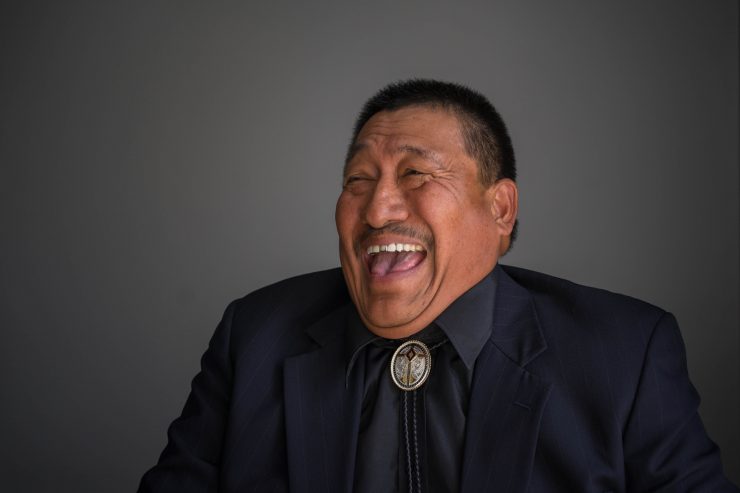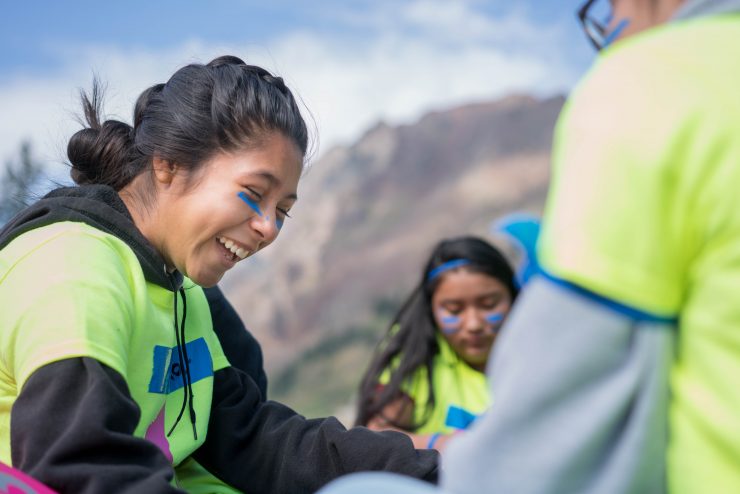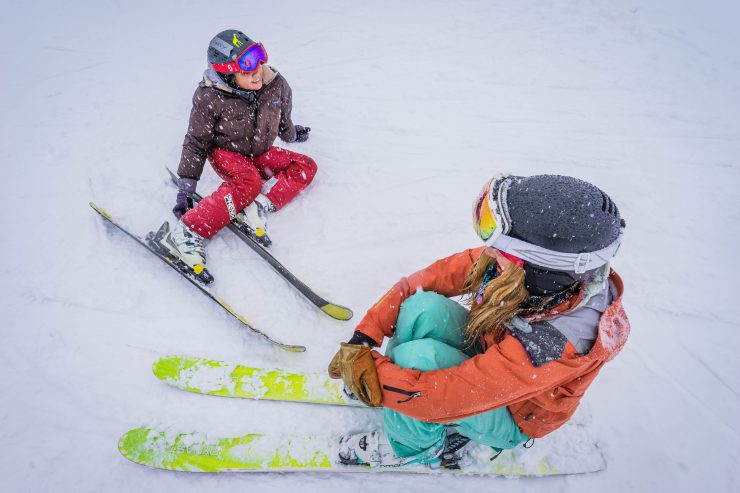
This is a two-part series exploring how some students in the Salt Lake City area are exposed to cross-country skiing through the good work of community members. Part-one features Gilberto “Juan” Rejón Magana of Hartland Community 4 Youth and Families, a non-profit serving disadvantaged youth. Part-two explores how the Utah Nordic Alliance, local teacher Rose Kjesbo, and dedicated colleagues teamed up to get kids on snow. All photos from part-one are from Peter Vordenberg, he is a board member of Hartland Community 4 Youth and Families.
***
Gilberto “Juan” Rejón Magana emigrated from Mexico and identifies as indigenous is one voice of an emerging and more diverse Salt Lake City. That voice has resonated as Magana, who moved to SLC thirty years ago, has been elevating the “underserved, at-risk and underrepresented population, including people who have refugee and immigrant backgrounds or identify as Latino/a” for more than a generation.
What’s important about Magana’s work is its longitudinal scope: His organization supports youth from kindergarten to high school with the end goal of matriculating in college. Magana founded Hartland Community 4 Youth and Families (HC4YF) and it recently began its sixth year as a non-profit.
Magana, however, has been a community advocate for twenty-five years. His journey began when he settled into the Hartland apartment complex nearly two decades ago. The apartments were a tapestry of languages as it became a place where immigrants and refugees put down their SLC roots.

“I had to learn a lot about different cultures,” said Magana. “But I found that there was a connection with my culture and the rest of the cultures at Hartland, that my own culture was very old also. African cultures and others have something similar. That was we all eat, that we all know how to plant, build up the soil, and do stuff like that. But for all new Americans coming in, everything was totally new here.”
Magana said he learned how divisive cultural misunderstandings can be when his young daughter’s bike was taken. He had purchased a used bike and fixed it up for her. One day while riding around the neighborhood she set the bike aside for a few minutes and returned to find the bike gone.
“We looked for it and on the third day a child rode into the community with the bike,” Magana said. “I recognized it and I say ‘hey, that bike is my daughter’s, I need you to give it back’. The kid spoke little English and was of Sundanese descent – if he did understand what I was saying then he played like he did not understand English.”
The boy claimed the bike was his. Randomly, an older man walked by who spoke Sundanese. He helped convey to the boy that he had stolen the bike and if he did not surrender it, Magana would call the police.
“But by then, I am learning that this child did not know he was stealing,” recalled Magana. “This child was coming from a refugee camp where they were living and he had no schooling. It was one big community and if a toy showed up, everybody played with it and then after 10 hours the ball was in the corner somewhere out there and nobody’s name was on it. They kept sharing, it went around the camp. This is what happened when the child saw the bicycle parked there, he thought somebody was finished using it or playing with it. He jumped on it and he passed it onto his brother, and to another brother, and to his cousin and so it went that way. That is what I learned, the child did not know he was stealing.”
Magana resolved to purchase a bike for the boy and also to address some of the toxic elements he observed around Hartland; gang recruiting, drugs and alcohol, and prostitution.
The interaction with the Sudanese boy became a catalyst for his life’s work. Magana began small as he organized a soccer team with one underlying premise, team members had to be attending school and in good standing at school. “They complied and I had to comply,” Magana said.
Like many urban centers, Salt Lake is becoming more diverse. According to estimates from the United States Census Bureau, SLC’s 2019 population was 200,567 people. Seventy-three percent identify as “white alone”, 2.3 percent as black or African American alone, 1.4 percent as American Indian or Alaska Native alone, 5.4 percent as Asian alone, 1.5 percent as Native Hawaiian and Other Pacific Islander alone, 4.4 percent as Two or More Races, and 21.6 percent Hispanic or Latino.
Through a socio-economic lens, the Census Bureau estimates that nearly 18 percent of the city’s population lives in poverty. There is a need for empowerment in the region when considering those on the periphery.
Magana’s level of compliance to his original promise to the community’s children bordered on the tenuous position of over-promising and potentially under-delivering. He over-delivered. Organizing soccer also meant assisting with homework, literacy, and navigating the myriad reasons why marginalized and disadvantaged kids would either not attend or perform poorly at school. Word spread of the change going on at Hartland. Magana networked with other like-minded non-profits, educational institutions like the University of Utah, and businesses who valued the work going on at Hartland.
“The unique thing is I get to work with those that nobody usually wants to work with,” Magana said. “Then suddenly everyone wants to work with us because the kids are smart, they learn quickly, and they are genuine. Now we have children that are applying for scholarships for them to go to college because that is the goal.”
Now, five years after becoming a non-profit, HC4YF has a core mission “to provide a pathway to college for Salt Lake County’s at-risk and underserved youth.”

HC4YF’s path to college is fused with environmental stewardship projects along the Jordan River, opportunities for older students to serve as mentors, and sports like soccer, snowshoeing, biking, hiking, and climbing to build confidence and provide structure. Sports offerings also include skiing. HC4YF has partnered with Utah based She Jumps to take the organization’s female participants alpine skiing at Alta. They have also begun coordinating with the Utah Nordic Alliance to provide cross-country ski gear and lessons.
The sports, tutoring, stewardship programs all facilitated by HC4YF are a means to further each participant’s education as Magana and others maintain a simple mantra of personal accountability.
“Our dialogue is as simple as can be,” said Magana. “When our children come to join our soccer club, they must be going to school. They must be there on time. They must do their homework. They must hand it in. And none if this does not happen, the teacher jumps into action. They send me a text about the homework, the kid gets pulled out of soccer training and they do their homework or read, whatever it was they needed to do. We focus on what we can control and what we can help is to do what we are doing. We stay in school. We keep focused, we go from kindergarten to elementary from elementary to middle school and onward. There is space for everyone in our program.”

Jason Albert
Jason lives in Bend, Ore., and can often be seen chasing his two boys around town. He’s a self-proclaimed audio geek. That all started back in the early 1990s when he convinced a naive public radio editor he should report a story from Alaska’s, Ruth Gorge. Now, Jason’s common companion is his field-recording gear.



